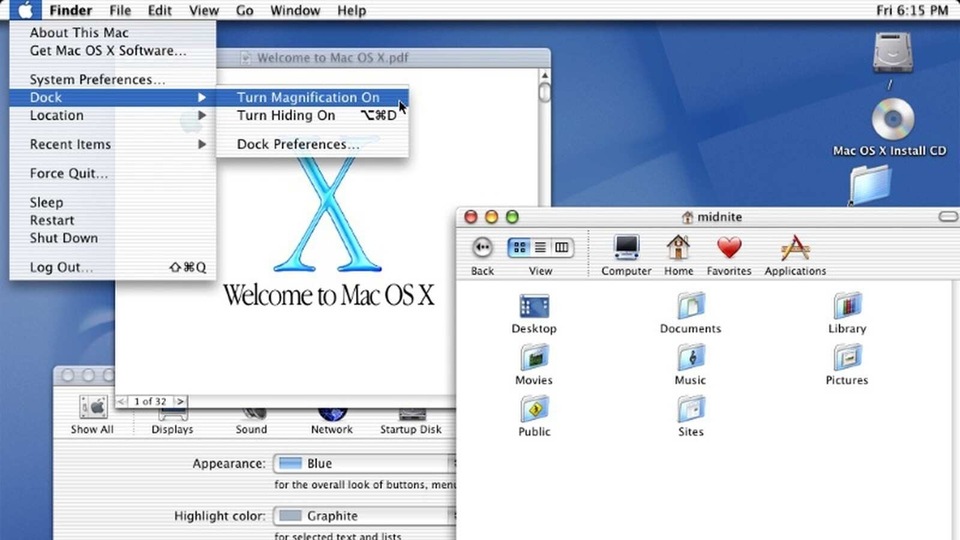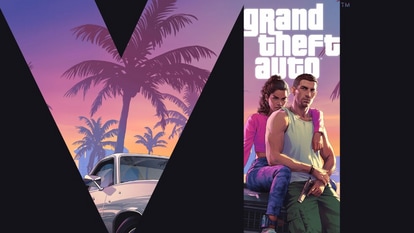It’s been 20 years since Mac OS X went on sale: Here’s looking back
March 24, today, marks 20 years of the iconic Mac OS X, the successor to the classic Mac OS. Here’s looking back at how the journey has been.


Twenty years ago, on March 24, 2001, Apple started allowing customers to buy the Mac OS X, the successor to the classic Mac OS. The first version of the Mac OS X, called the “Cheetah”, was distinct for its “Aqua” interface that had water bubble-style designs for everything from its windows to its buttons.
Since then to now, the Mac OS has undergone a sea of changes but it was with the Mac OS X that Apple took one of the biggest steps towards transforming from a company that was on the brink of failure to one of the most successful in the world. The Mac OS X preceded the launch of the first iPod and it heralded what was expected to come under Steve Jobs' historic leadership.
The Mac OS X was first introduced in January 2000 in a keynote address at the Macworld Expo. You can check out the press release Apple issued them to announce the Mac OS X, here. Jobs had said in the keynote then that the Mac OS X would "delight consumers with its simplicity and amaze professionals with its power" and added that it was the "most important software" from Apple since the original Macintosh operating system launched in 1984.
The Mac OS X finally was made available for users on March 24 the following year and you can check out the release Appl sent out then, here.
The water bubble interface of the Mac OS X brought in the, what is now familiar, Dock that gives users easy access to apps, docs etc and it also included a revamped Finder for file management on the system. This Aqua look is also deemed iconic for its translucent scroll bars and buttons.
Other features on the Mac OS X included advanced power management, Apple's Quartz 2D graphics engine for "stunning graphics" and broader font support and it came with QuickTime 5, iMovie 2, iTunes, and AppleWorks, which was Apple's productivity software at that time.
The Mac OS X was built on Apple's “Darwin” operating system core and supported most of the existing Mac OS apps. However, developers also had to “tune-up” their apps to make things work better, so subsequently Apple rolled out the Mac OS X over a 12-month beta period (2000 to 2001) before finally making it available for purchase.
When it finally launched, the Mac OS X was priced at $129 ( ₹9,363 approx) and at that time Apple was still charging MAc users for upgrades. These updates gradually got less expensive over the years till Apple finally made them free in 2013.
As exciting this spanking new Mac OS X was, its debut was far from perfect. It had major stability issues that Apple had to fix. Apple followed the “Cheetah” up with the Mac OS X 10.1, also named “Puma”, just six months after making Mac OS X available and has continued making improvements over the original 2001 release.
The Mac OS X was renamed OS X in 2012 when Mountain Lion was released in 2012. The Mountain Lion OS X was an operating system that came with an even more minimal design and transitioned away from the “skeuomorphic” designs Apple used under Scott Fortsall's leadership.
OS X Mountain Lion came alongside the iOS 7 which was one of the biggest design overhauls seen on the iPhone operating system.
In 2013, Apple brought in the OS X Mavericks. This was the first version of the Mac OS X that was not named after a big cat (Cheetah, Puma and the Mountain Lion all come before this.
The next big change on the Mac OS X came in 2016 when Apple decided to drop the X from the nomenclature and launch the macOS 10.12 Sierra. The new macOS name matched it better and made it sound more like the iOS and since we've seen many versions of the macOS right down to the latest - the macOS Big Sur.
The Big Sur has been Apple's biggest design update to the macOS since Mac OS X. Everything from the curve of window corners, to the colours and the dock icon design, everything has been revamped on the Big Sur. Apple designed the latest update to look and feel fresh while still being familiar, they included less obtrusive menu bars, a more translucent dock, a uniform shape for all app icons and revamped system of sounds.
The Big Sur also revamped the Notification Center and added quick access Control Center toggles and also important updates to Safari, Messages, Photos, Maps, and more.
The macOs 12 is expected to be launched later this year and while Apple might not make a major overhaul in this one, it is definitely going to come with some new features.
Catch all the Latest Tech News, Mobile News, Laptop News, Gaming news, Wearables News , How To News, also keep up with us on Whatsapp channel,Twitter, Facebook, Google News, and Instagram. For our latest videos, subscribe to our YouTube channel.


























